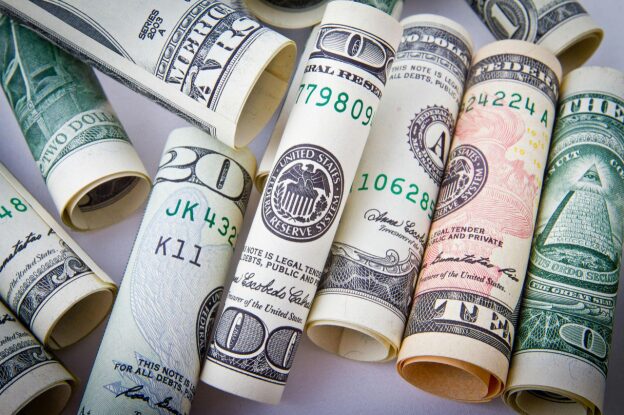In the world of finance and political campaigns there are two terms that are commonly used – ‘hard money’ and ‘soft money’ although these terms give rise to confusion in relation to their precise meanings as well as connotations.
To what extent these two types of money differ from one another is important for economists to consider in their analysis of systems of money as well as for political campaign managers in their strategic planning. To this extent, this essay seeks to explain the meaning, application and effects of hard money and soft money with the purpose of explaining their relevance.
Introduction of Hard Money and Soft Money
But in the political field, hard money means the contributions made directly to political candidates or their campaigns. Such contributions are regulated by federal and state laws and are limited and accompanied by disclosure provisions.
Hard money is used for payment directly for or in relation to a candidate’s campaign and is always traceable in the political process. There are other uses for the term, such as hard money loans and other financial products. It is important to know what this term means.
On the other hand, soft money is defined as any donation given to political parties, or committees that are not canned by the federal campaign finance laws. These funds are usually employed in activities within the party, in mobilizing the public to turn out in large numbers and vote for a certain candidate and in filling the people with the issues that will shape their vote.
There are so many rules laid down regarding the use of hard money that its intention is to curtail corrupt practices by wealthy individuals or groups. For example, in the United States, the Federal Election Commission (FEC) controls the quantum that people, groups and organizations can give to the candidates in terms of money to level the playing field. You can click the link: https://www.fec.gov/ to learn more.
Due to limited and relatively flexible rules, it becomes possible to use much bigger sums of money, sometimes unlimited ones, from individuals, companies, unions, etc. This makes for a vast potential political power in exchange for financial operation flexibility, raising questions about the latter’s influence for corruption of democracy.

Track and report on engagement metrics.
As someone who works in eLearning, you know that an LMS is only as good as its ability to track and report data. And while most LMSs these days have some engagement metric tracking capability, they don’t all do it well. If you’re looking for an LMS that does engagement metrics right, then look for time spent on the platform.
After all, if your learners aren’t spending much time on the platform, they’re not engaged. Look for an LMS that can give you detailed reports on how much time learners spend on the platform overall and how much time they spend on specific courses or modules.
Economic Context: WHEN Borrowing Meets Campaigning: The Distinction between Hard Money and Soft Money
In economic parlance, hard money and soft money have different connotations. The term ‘hard money’ designates organized money that has a real support – precious metals, for instance, gold and silver. Earlier, there were more forms of hard money which means that the currencies can be exchanged directly with the other physical assets especially the metals that are considered precious.
It afforded a fixed and dependable monetary foundation, because the value of the currency was anchored on a physical material. For example the Gold Standard which was popular in the 19th and early the 20th century fixed official paper money prices in terms of gold. But the main problem with having hard-money systems was that they were often highly inflexible and this restricted the capacities of governments to handle economic shocks and cycles.
The term soft money in economic context is equal to fiat money where its value is supported by nothing tangible but the government’s word. Contemporary economies almost exclusively rely on soft monetary systems under which central banks retain discretion over the control of money stock and monetary policy.
This flexibility helps in that economic stability is achieved and capabilities to meet current economic ills such as inflation and recession are available. For instance, during the 2008 financial crisis, central banks launched a program known as quantitative easing where liquidity was released by the economy, something that would not be possible under the hard money system.

Political Consequence of Hard Money and Soft Money
The political impact of hard money and soft money is enormous, touching on the various aspects of the campaign and the whole democratic process. This is because the hard money is regulated and transparent compared to the soft money which is viewed as a necessary evil political contribution.
The requirements on hard money contributions guarantee the possibility to trace the sources and the amounts of money received by the candidate. These actions increase transparency, and the voter has faith in the electoral process; this pins down the occurrences of corruption. You can click the link: https://electiontransparency.org/ to learn more. Nevertheless, the restrictions on the use of hard money can also present problems for candidates, especially those who are financially weak since they may be out fundraising well-funded opponents.
Soft money, however, has been an issue of concern and discussion because of its failure to conform to legal measures. It has also been criticized as favoring lobbying by wealthy people and organizations; this is seen to thwart the spirit of democracy. Soft money has been defined as those funds which may flow freely through the political system, and are most liberal in terms of their contribution to support the candidacy of any individual; they also contribute to an imbalance in political influence in a way that only financially powerful persons and groups could benefit.
As a result of these concerns, different campaign finance reforms have been made with the aim of eliminating soft money. The BCRA of the year 2002 also known as McCain-Feingold act sought to ban the use of soft money in federal elections. The act banned the national political parties from obtaining or spending soft money and placed conditions on the amount that could be donated to state and local parties.
Nevertheless, loopholes and legal challenges have continued to emerge, and therefore making it clear that the struggle for democratic Europe and purging out financial malignancies is still on.
The economic consequences of the hard money and the soft money are also equally felt. Due to the backing by physical commodities, hard money systems, therefore, offer a credible and reliable monetary formation. But disadvantage of them or also known as hard money is that they are rigid and hence do not support growth of the economy or provide the needed flexibility to the governments during financial calamities.






